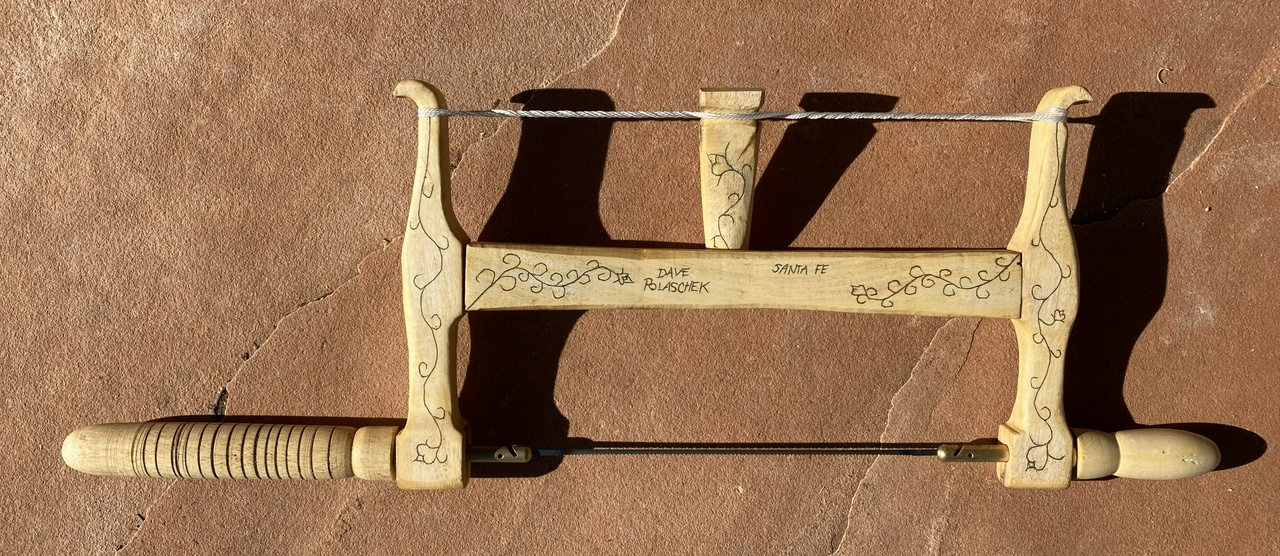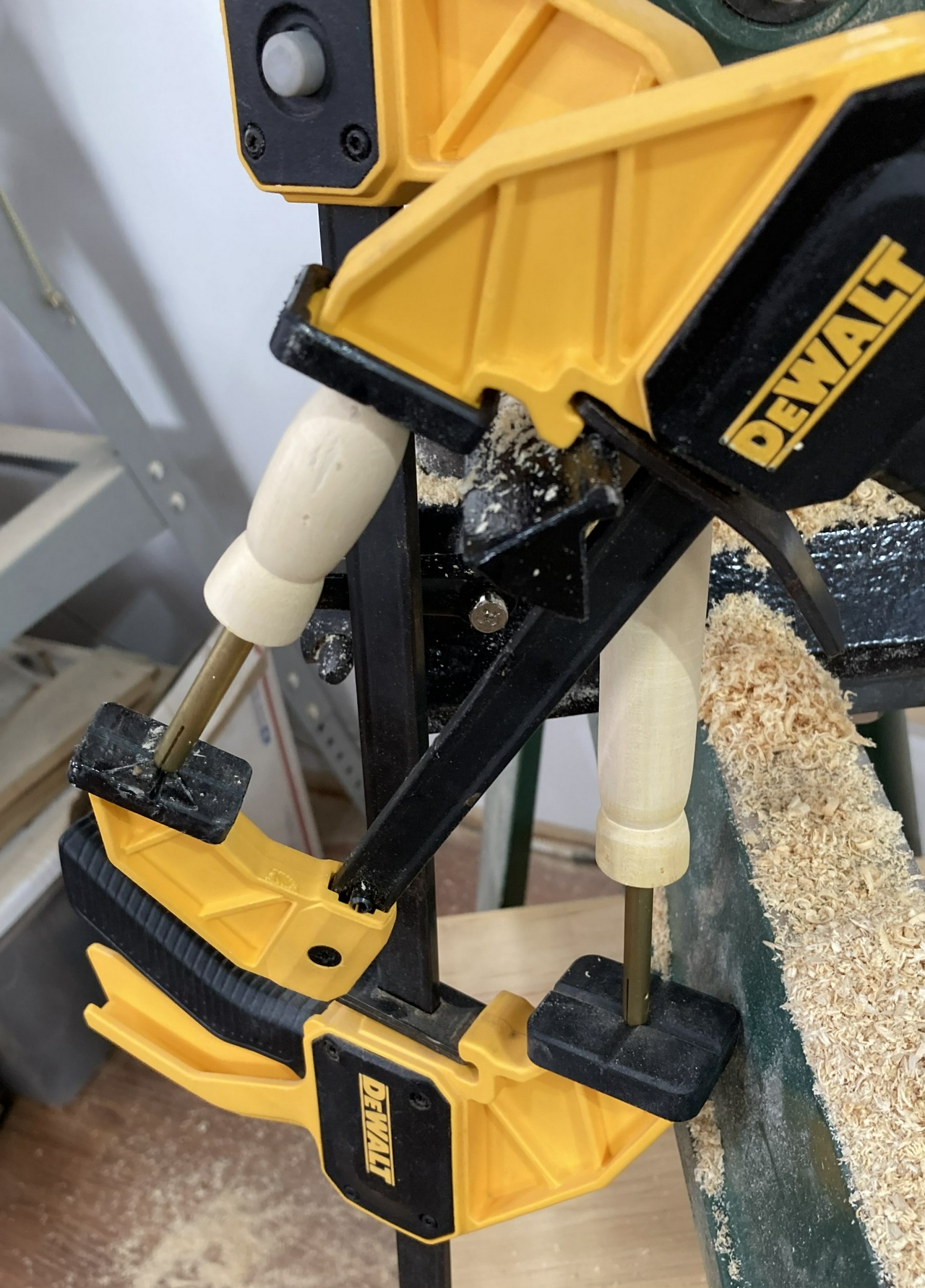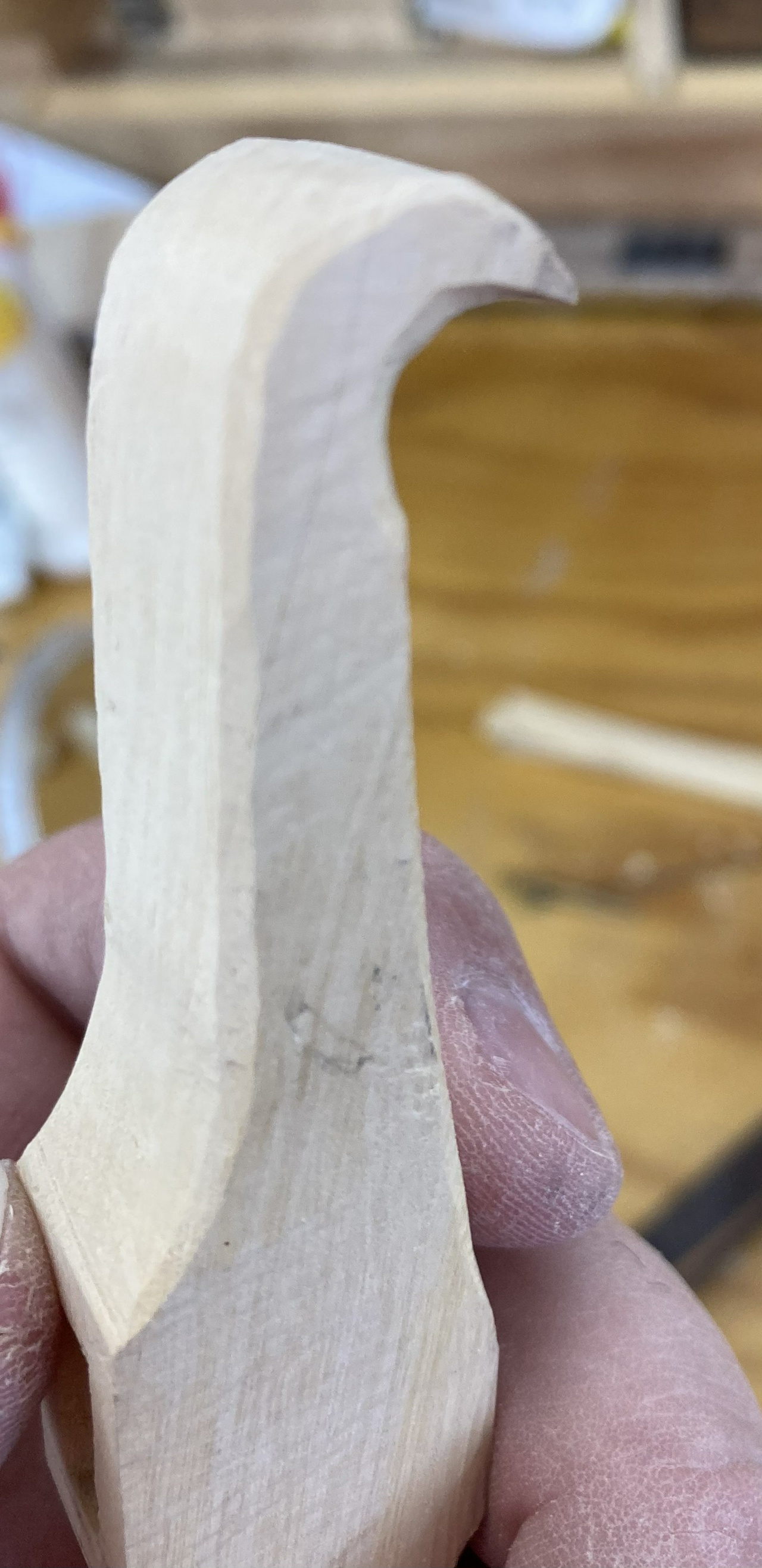Handy Tools – Sharpening a Miter Jack Saw
[Originally written by Bob Summerfield in February of 2019]
I should probably say a little about sharpening this type of saw for anyone who may come along later and wonder. I researched the topic as best I could with the scant information available. One nationally prominent saw sharpener, whom I respect a lot, documented his approach. He sharpened the saw with “peg teeth”, that is with an equal rake angle on the front and back edges of the teeth. That would equate to a 30 degree rake angle, which would normally be thought of as extreme. The rationale was that the saw would then cut equally well on the push and pull strokes. That is true, but equally well doesn't translate to efficiently. It wouldn't cut great on either the push or pull stroke. He also put no set in the saw, so that it wouldn't scrape the miter jack. That might work fine in thin stock, but it seems the saw would bind in thicker stock.
If you think about a miter box saw, they could be filed to cut on both the push and pull stroke, but they are not. There's a reason for that – to cut more efficiently on the push stroke. They also have a light set.
In examining Kevin's saw, it was quite dull, but the teeth were very well sharpened (equal size and spacing). I doubt the saw had ever been resharpened since it was made. In looking down on the saw with the toothline pointed up, the teeth were pointed right to left with what appeared to be a “normal” rake angle for a crosscut saw of around 12 to 15 degrees. I would call this configuration suitable for a right hand push stroke. That is, if you grasp the handle in the right hand, with the toothline pointed to the right, the teeth are shaped to cut best if the saw is pushed away from you. Kevin's saw also had a very slight set.
I looked at as many pictures of this type of saw as I could find on the internet. You could see the teeth on several of them, and they were all shaped just like Kevin's saw. Based on these observations, I concluded that a standard crosscut sharpening with very light set is what these saws were supposed to have. All that I saw were sharpened for right hand use. But what if you were a left handed sawyer? Then you would either have to use the saw on the pull stroke or have a left handed saw made for you.
I hope that is helpful information for anyone who may have a need to sharpen a French miter jack saw, or scie à recaler.
To further illustrate the above, I'll use this picture from the Lee Valley website. If you were standing on the left side of the picture, you would be using a right handed grip (though both hands may be on the saw) and a push stroke. If you were on the right side, you would be using a left handed grip and a pull stroke.

Discuss... Reply to this in the fediverse: @davepolaschek@writing.exchange









































